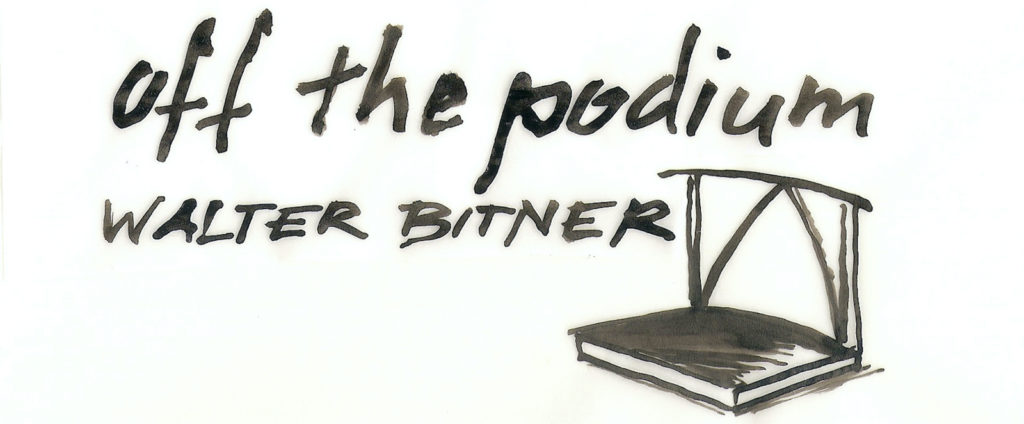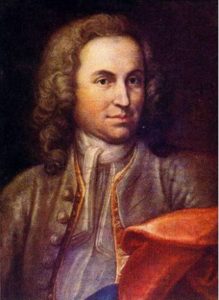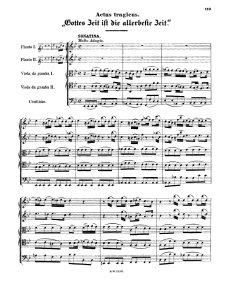
During the eleven-day period from March 21 – 31 it has been my practice for many years to spend some time each day reflecting on the music of Johann Sebastian Bach, as I have written about here. Our friend Sebastian was born this time of year in 1685 – on March 21 or March 31, depending on whether you recognize Old or New Style (Julian or Gregorian) calendar conventions for commemorating things that happened centuries ago.

Now under quarantine, this annual period of concentration brings a heightened sense of immediacy, of what G.I. Gurdjieff called “The Terror of the Situation”. People around the world are dying, the pandemic has disrupted everyone’s lives, and the reality is: some of those close to me may die, or I may die myself. This is in fact the reality of everyday life, but our drastically more uncertain times underline the certain fact of our mortality.
One of the primary roles of art is to help us face difficult or insoluble aspects of human experience, and music has been a means for us to seek peace, acceptance, and understanding of death since ancient times. Sebastian – who lost both parents at the age of nine and whose experience forced him to grapple with death consistently throughout his life – left behind a body of work that includes many masterpieces in the genre of “death music” that includes so much celebrated choral literature (e.g. anything with the word requiem in its title).
So when my annual period of daily reflection on Sebastian’s music began on Saturday, I renewed my long acquaintance with BWV 106, the cantata Gottes Zeit ist die allerbeste Zeit (God’s time is the very best time) also known as Actus Tragicus. Sebastian wrote the Actus Tragicus when he was 22, and it is his first great entry in the “death music canon”.
PRESS PLAY: Johann Sebastian Bach: Cantata BWV 106 “Gottes Zeit ist die allerbeste Zeit” – “Actus Tragicus” performed by Collegium Vocale Gent & Musica Antiqua Amsterdam, directed by Gustav Leonhardt.
There are many audio recordings and videos of Actus Tragicus available now, but this video made about fifty years ago was one of the first, is still one of the finest, and is of considerable historical significance. It is not exactly the same ensemble that made the audio recording included in Volume 26 of The Complete Cantatas recorded for Teldec, although many of the personnel are the same.
Some of the influential musicians involved in this video recording include not only 0:22 director Gustav Leonhardt (1928-2012 – leading pioneer of the historical performance movement). Is that Jaap ter Linden with a beard playing gamba at 0:29? The recorders at 0:49 pair Frans Brüggen (1934-2014), the most influential recorder player in history; and Walter van Hauwe (b. 1948) whose three-volume masterpiece The Modern Recorder Player is the best method for the instrument ever written (I spent many hours with these books in the 1990s and early 2000s). Note also 2:02 Ton Koopman (b. 1944), portativ organ and Anner Bylsma (1934-2019), cello. Decades later, Koopman directed this performance of Actus Tragicus which includes a few of the same musicians. The soloists all give remarkable performances here, and how young they are! 5:18 Marius van Altena (b. 1938), tenor; 7:05 Max von Egmond (b. 1936), bass 12:08 René Jacobs (b. 1946), alto; and 9:22 Mieke van der Sluis, soprano. The choir is superb – warm and supple – and sing with clear yet soft diction through Leonhardt’s gentle tempi. And finally, as if I haven’t given you enough reasons: Mieke’s green eye shadow!
I am by no means an expert on Sebastian’s cantatas – there are hundreds of them after all. Over the years I’ve participated in performances of roughly a dozen different ones in various capacities (choral singer and soloist, recorder or continuo player, conductor) and attended performances of of few dozen more, perhaps. But 106 is special to me, and I have a long and intimate relationship with this piece.
 I sang in the bass section (there were two of us) of a doctoral recital performance at Claremont Graduate School when I was in my teens, played the first recorder part on several performances in the 1990s and 2000s in Florida and Nashville, and in 2014 conducted performances with my own chamber choir at Nashville School of the Arts and a small orchestra of musicians from the Nashville Symphony and Music City Baroque at the city’s annual BACHanalia festival and at Vanderbilt’s Blair School of Music.
I sang in the bass section (there were two of us) of a doctoral recital performance at Claremont Graduate School when I was in my teens, played the first recorder part on several performances in the 1990s and 2000s in Florida and Nashville, and in 2014 conducted performances with my own chamber choir at Nashville School of the Arts and a small orchestra of musicians from the Nashville Symphony and Music City Baroque at the city’s annual BACHanalia festival and at Vanderbilt’s Blair School of Music.
There are many pieces that Sebastian wrote that mean a lot to me, and this one is at the top of that (ok it’s not very short!) list.
Instrumentation

The instrumentation of 106 is unique among all of his cantatas, and in fact it is the only piece I have ever come across or even heard of that has this instrumentation:
SATB soloists
SATB choir
2 recorders
2 violas da gamba
continuo
As far as I know, 106 is unique in all the literature simply by virtue of its instrumentation alone. Sebastian’s employment of the (already by his time) antique instruments lends 106 its unique timbre among all of Sebastian’s cantatas. In many ways 106 is an acknowledgment and homage to the musical tradition that Sebastian inherited, and this first mature work is an expression and culmination of that tradition.
Text
106 was originally composed for a funeral, and Sebastian presumably compiled the text himself, from the Old and New Testaments and from Martin Luther. In addition – another means by which Sebastian alluded to the music of the past – he included sixteenth century hymns by the Lutheran pastor Johann Leon (1531-1597) and hymnist Adam Reusner (c1496-1575).
The cantata’s text is religious, and expresses Christian belief in eternal life, juxtaposing and contrasting eternity (“God’s time”) with the temporal. I am not going to explore the theology of the text’s message very deeply here, but I will note this: the text of the cantata’s first aria “Ach, Herr, lehre uns bedenken, daß wir sterben müssen, auf daß wir klug werden” (Lord, teach us to ponder that we must die, so that we will become wise) describes the ancient idea that if I become conscious of the reality that I and everyone I know will perish, I may hope to attain wisdom.
Analysis of some of the cantata may be found here on bach.org, the website of the Bach Choir of Bethlehem, and a variety of translations of the text can be found on the Bach Cantatas website here (scroll down to BWV 106), and the original German with a handy side-by-side English translation may be found on the Emmanuel Music website here.
Unspeakable Beauty
If you have a little time and the inclination, and its been a while (or longer) since you read about Sebastian’s life, allow me to recommend the excellent “dual biography” of Sebastian and Frederick the Great Evening in the Palace of Reason by James R. Gaines, which includes some of the most profound reflection on the Actus Tragicus that I have come across. And at this point let’s take Gaines’s advice and let the music speak for itself:
Considered simply – or not so simply – as a work of art, the Actus Tragicus is almost unspeakably beautiful. In fact its beauty is unspeakable, though we can talk about it…
…Finally, though, one comes up against the fact that the greatness of great music is in its ability to express the unutterable. Having reached that point exactly, and not for the last time, we would be best served to… get out the score, put on the music, read the words and the music together, consider the power of inspired (as well as rigorously educated and deployed) genius. The St. Matthew Passion, the B-minor Mass, the Brandenburg Concertos, the cello suites: All of Bach begins here.
~ James R. Gaines
Evening in the Palace of Reason (2005), pp. 94-95
©2020 Walter Bitner
Walter Bitner is a multi-instrumentalist, singer, conductor, and teacher, and serves as Director of Education & Community Engagement for the Richmond Symphony in Richmond, Virginia. His column Off The Podium is featured in Choral Director magazine, and he writes about music and education on his website Off The Podium at walterbitner.com.


cpturner says
Awesome way to start out this beautiful Tuesday while stuck inside my apartment. Thank you!
Walter Bitner says
Thanks for reading and listening!